Italy – The new government
Highlights about the new Government
Unprecedented crisis
The political and institutional crisis over Italy’s new government, which has last around three months, has been unprecedented in all its features. As a result of this, and of the outcome of the political election of last March, a completely new political leadership with a strong populist orientation has replaced historical parties (centre-left and centre-right). Professor Giuseppe Conte, the Prime Minister leading the new Government, was an unknown profile until very recently. He received the mandate to form the Government twice in less than a month (his first attempt being rejected over the nomination of anti-Euro economist Paolo Savona as Economy Minister).
The new government received the vote of confidence in the Senate on Tuesday 5 June and in the Lower Chamber on Wednesday 6 June. Italy will therefore be represented by the new PM at the upcoming European Council on 28-29 June, where key agenda items to be discussed include migration, long-term EU budget (MFF) jobs, growth and competitiveness.
Di Maio – Salvini in the “control room”
The nomination of Mr. Conte has been the outcome of a political deal between the leaders of the two parties who won the elections: Luigi Di Maio, heading the anti-establishment Movimento Cinque Stelle (Five Star Movement) and Matteo Salvini, leading the far-right Lega party (League). Mr. Conte will have to deliver the political agenda negotiated by the two leaders known as “A contract for a government of change”.
Both leaders Luigi Di Maio and Matteo Salvini secured for themselves the role of Deputy Prime Ministers to back Mr. Conte with a clear political mandate. Moreover, they will both take the lead of key departments which will allow them to take forward their respective main priorities (basic income for all and fight against illegal immigration).
A predictable scenario is a strong “control room” at the top, with Mr. Salvini and Mr. Di Maio heavily influencing President Conte and Economy Minister Tria over the key dossiers discussed both domestically and in Brussels. Mr. Paolo Savona, a controversial figure during the discussions on the first mandate given to Professor Conte, is still included in the list of Ministers as EU Affairs Minister, meaning that he will not have a key institutional role in allocating financial resources or in specific policy files, but he is expected to have an influential role on a personal level on the two leaders.
The challenge ahead now for the new government is that the predominant public figure of Mr Salvini, with his heavy public presence and loudness, overshadows the more moderate approach of the other leader Di Maio, risking that the overall balance of the new government could shift towards the extreme right. The Five Star Movement has the rather complex role of maintaining equilibrium in the next few months and years to ensure balance in the government.
International reactions
There has been considerable attention since the elections at the beginning of March over the formation of the new Italian government in Europe. Not only did the markets highlight the importance and urgency of providing clarity on the political and policy agenda, but EU leaders also expressed their views on this totally new political balance in the fourth largest economy of the bloc.
Angela Merkel promptly said that she is ready to work with the new Italian government with an open-mind, also in the attempt of giving reassurance to the turbulent financial markets. However, she is reported to have said that she would be firm in ensuring Italy does not deviate from the EU fiscal rules that govern the Euro. On his side, Emmanuel Macron defended the decision of the Italian President of the Republic to reject the list of Ministers over an Economy Minister potentially dangerous for the whole EU, and emphasized the critical role that Italy has for Europe.
More worryingly, after the strong support expressed by Marine Le Pen (French extreme right), Hungarian President Viktor Orban is also reported to have reached out to Matteo Salvini, to congratulate him for the new government and in hopes to “change the EU together”. An alliance of this kind would certainly put Italy in the group of the most euroskeptic countries and a difficult country to work with to reform the EU.
The political compromise
After weeks of tough negations between the two winning party leaders, who both have been claiming the right to lead the new government, Mr. Di Maio and Mr. Salvini got together in the last few weeks to work on a political compromise, named “Contract for a government of change”, inspired by the recent German model.
The deal will allow both parties to run the country and avoid the threat of new elections (a potential outcome until a couple of weeks ago), where either of the two might unexpectedly lose against the other. However, the Machiavellian last-minute deal rests on the sine qua non condition that the Prime Minister should not belong to any of the two parties and should be instead “a neutral figure”. Therefore, Professor Giuseppe Conte was announced to be such figure and was welcomed by both leaders.
The contract is unprecedented in Italy’s modern political history. Since the end of the so-called “First Republic” in 1992, governing coalitions have negotiated behind closed doors over the main priorities to be pursued, safeguarding the political space needed to respond swiftly to major crises. That said, the “contract” falls short of reproducing the German model in many respects, most notably due to the almost complete absence of figures identifying the financial resources to back the coalition’s proposed tax reforms and social benefit schemes. In fact, the style and content of the document resembles an electoral campaign manifesto rather than a credible government programme for the EU’s fourth largest economy.
When opposites meet
Di Maio declared that the government contract “binds two political forces that remained alternative, to respect and achieve what they promised to citizens”, while Salvini has renamed the contract “Italians first”.
Both leaders, who make wide use of social media, have immediately reacted to attacks from Brussels, claiming that Brussels bureaucrats threaten a democratically elected government and have announced that, with regard to Europe, the two leaders agree to put Italians’ interests as their priority. Mr. Di Maio and Mr. Salvini have posted the contract on the web to their electorate’s test and have both received over 90% endorsement from their constituencies.
A shaky deal
The political deal is shaky and vague. As always, the devil is in the detail, where the two parties are likely to find themselves on opposite sides: where to get the financial resources, measures for promoting growth, employment and industry, environmental and energy policy, how to deal with unemployment and slack growth in the South, to name a few. Agreement on those key issues will be tough, as majority in the Senate is very thin (only 6 votes). Moreover, any agreement is under potential threat if Mr. Di Maio and Mr. Salvini decide to consult their electorate before making decisions.
The key elements of the “Contract for a government of change”
• The introduction of a flat tax with two brackets (set at 15% and 20%, depending on the taxpayer’s yearly income) – a contradiction in terms in itself – the cost of which has been estimated at € 50 billion per year. The measure would be accompanied by the elimination of the “safeguard clause” to ensure the attainment of EU-agreed fiscal targets in the form of an automatic VAT increase for 2019, which is estimated to cost € 12.5 billion.
• The introduction of a basic income of € 780 per month (citizen’s revenue) – has been estimated to cost around € 17 billion per year. Despite its name, the proposal is in fact a temporary jobseeker’s allowance to be handed to the unemployed, on the condition that he/she actively seeks a job and does not reject a maximum of three proposals from the unemployment office in the course of two years. The contract specifies that this measure will be introduced only after a planned reform to increase funding for government-funded job centres.
• A commitment to wipe out the pension reform (called for by Europe) agreed under Mr. Mario Monti’s government (Riforma Fornero), a measure that would cost around € 8.1 billion per year.
• A cut in government spending by reducing the number of parliamentarians, their benefits and pensions schemes
Key EU-related issues
• A generic commitment to oppose provisions that reduce citizens’ rights included in EU-negotiated trade agreements, and a specific commitment to convert existing Free Trade Agreements into mixed agreements insofar as they damage Italy’s agriculture producers;
• An explicit rejection of the bail-in provisions included in the BRRD, a commitment to review the capital requirements for banks (Basel III) and to pursue a legal separation between commercial banks and investment banks
• A generic commitment to pursue public debt reduction via GDP growth and deficit spending, rather than higher taxes and austerity measures; to this end, the new government should persuade the EU Commission to exclude “productive public investments” from Italy’s current account deficit.
• A commitment to move beyond the Dublin regulation and impose the redistribution of asylum seekers across the EU, reform existing EU asylum and migration policies and review EU-led missions in the Mediterranean.
A shift in foreign policy
• Italy’s NATO membership and privileged partnership with the United States is reaffirmed, but the coalition government intends to pursue a rapprochement with Russia, which is seen not as a threat but as an economic and trade partner.
• The contract includes a commitment to end existing sanctions against Moscow.
• A shift of focus toward the Mediterranean as the main source of external threats, including terrorism and migration.
About Giuseppe Conte

Mr Conte had a relatively low-profile in Italy up until now. Born in a small village in Puglia, the South of Italy, he has an extensive career in law and academia. Currently teaches public administration law at Florence University and the Luiss University in Rome. He has been a member of the board of directors of the Italian Space Agency and a legal consultant to the Rome Chamber of Commerce. He also argued in the past against red tape and bureaucracy when it becomes an obstacle for growth. His academic curriculum has been already under the spotlight of the international press for lack of record of his studies either in the US or in the UK. He will bear responsibility for the Government and have to face the challenge of mediating between the League and the Five Star Movement that are likely to have divergent views on some key issues.
Key Ministers
Matteo Salvini – Home Affairs Minister and Deputy PM

Leader of the League since 2013, will also cover the role of Deputy PM in the new government. He led the recent restructuring of the League party, by moving away from the concept of separatism and removing the word “Northern” from the name of the party. He is very close to the thinking of Marine Le Pen and Viktor Orban and an ally of Vladimir Putin and holds US President Donald Trump in high esteem.
Luigi Di Maio – Economic Development & Labour Minister and Deputy PM
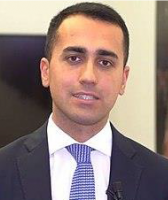
Leader of the Five Star Movement since 2017, will also cover the role of Deputy PM in tandem with Mr Salvini. The youngest Minister (31 years old). He never graduated despite two attempts in Law and Engineering. Became Vice-Chair of the Chamber of Deputies with the Five Stars Movement when he was only 25.
Giovanni Tria – Minister for Economy and Finance
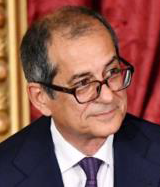
Currently the Director of the University of Tor Vergata in Rome. He was born in 1948 and has a Degree in Law. University professor for 35 years, he lectured on development, economic cycles and growth, public investments and governance. He has been President of Public Administration School, member of the American Economic Association and representative of the Italian government at the International Labour Office (ILO). His position on the Euro is moderate, but he has been critical over fiscal policy and VAT issues. He recently argued in favour of the proposed Flat Tax, through possibly a VAT increase.
Enzo Moavero Milanesi – Foreign Affairs Minister
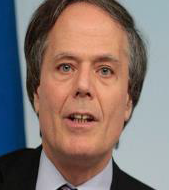
EU Affairs Minister under the previous governments of Mario Monti and Enrico Letta. The only Minister in the new government who has senior experience of EU institutions and Brussels. He is perceived as a reassuring figure and previously covered the roles of Head of Cabinet for two European Commissioners (Filippo Maria Pandolfi and Mario Monti). He served as counselor to former Presidents of the Government (G. Amato and C.A. Ciampi). After his degree in Law, he studied at Yale in the US and at the College of Europe in Bruges (Belgium). In the 2000s he became judge of the European Court of Justice.
Paolo Savona – EU Affairs Minister
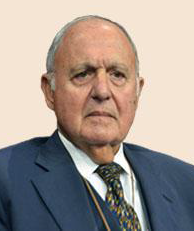
82-year old, the oldest Minister. Covered the role of Minister for Industry in 1993 under the government of Carlo Azeglio Ciampi. With a degree in Economy in 1961, a specialization at Boston University and professional experiences at the Bank of Italy and Confindustria (national industry confederation). He also covered roles in one of Berlusconi’s governments. Originally named for the post of Economy Minister and subsequently downgraded to Minster for EU Affairs over concerns on his stances against the Euro and Germany’s role in Europe.
Giulia Grillo – Minister for Health
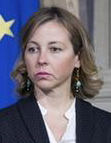
One of the five women in the new government (out of 20 Ministers). She has a degree in medicine and surgery with a specialization in forensic medicine. She has been member of the Parliament since 2013 and during her mandate she signed three motions on pharmaceutical governance, on the turn-over of the sanitary employees and on the management of the waiting lists. Her main battles are on a fair price of innovative drugs.
Elisabetta Trenta – Defence Minister
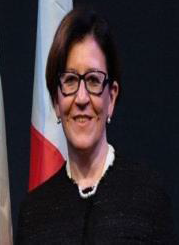
Comes from the Five Star Movement. She previously covered different roles in the defense world such as researcher at the Military Center of strategic studies and president of the Consortium for Research on Intelligence and Security Services. This last role raised criticisms over private contractors in the Italian Army. More recently, through the NGO SudgestAid, Ms Trenta has overseen interventions in countries like Iraq and Libya and actively participated in military actions commissioned by the Ministry of Defense.
Sergio Costa – Environment Minister
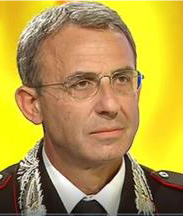
Mr Costa has an academic background in Environment Law and graduated in Agricultural Sciences with a Master on Environmental Law. He is regional commander in the Forestry Corps (now Brigadier of the Army after the merger of the Forestry Corps into the Army) and led an investigation against organized crime dealing with toxic waste in Campania.
Gian Marco Centinaio – Agriculture Minister
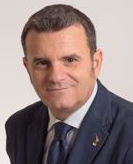
Member of the League, he has a degree in Political Sciences with focus on local economies. In the past he covered several roles in local governments in his region, Lombardy, until he got elected in 2013 for the Senate.
Danilo Toninelli – Minister for Infrastructure and Transport

Started his political career in the Five Star Movement and he is at his second mandate as member of the Parliament. He previously served in the Carabinieri corps and in an insurance company. He does not have experience in the portfolio that he will cover.
-

Laura has been a member of the Energy and Transport team since 2013. Laura manages a wide range of clients from small companies to large manufacturing enterprises and trade associations. She previously gained experience at the European Petroleum Industry Association (now FuelsEurope) and in the...
Find Out More
-
Generative AI is changing the search game
May 8, 2025
-
The challenges facing Europe and European leaders at Davos 2025
January 24, 2025


